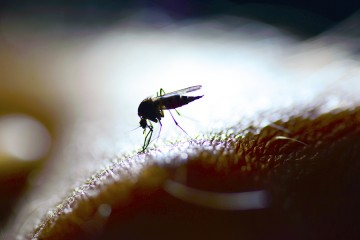A Johns Hopkins University scientist is part of a team working on a method to predict malaria outbreaks months in advance, potentially giving public health officials a chance to protect people from a disease that poses a risk to nearly half the world's population and kills hundreds of thousands a year.
Ben Zaitchik, an associate professor in the Department of Earth and Planetary Sciences, is developing a malaria forecasting model based on a formula that takes into account the movements of people and the changing environmental conditions that contribute to where and when the mosquito-borne disease will emerge.
The principal investigator is William Pan, an assistant professor at Duke University, who will focus on disease transmission and the public health response to outbreaks. With funding and satellite information provided by NASA, the scientists are working in collaboration with the governments of Peru and Ecuador, where outbreaks of malaria are common.
Zaitchik, who specializes in climate and hydrology, says the Johns Hopkins part of the project is to provide the "backbone" for the early warning system. Their goal is to predict where malaria outbreaks will occur 12 weeks in advance, which would give public health officials time to take steps to prevent the disease, including administering medications, spraying insecticides, and providing bed nets.
"We work on understanding, monitoring, and predicting variability in rainfall, soil moisture, evaporation, anything else in the environment that might influence where mosquitos that transmit malaria might end up," he says.
"The problem is that you don't know where the outbreak will happen and you don't necessarily have the resources to be everywhere at all times. An early warning system allows the government to move in in advance of the outbreak to try to deploy some of these known preventative measures before malaria takes over a region."
Malaria causes a range of symptoms, including fever and fatigue in mild cases. In extreme cases, the disease can cause seizures, coma, and death. According to the World Health Organization, in 2015 there were about 212 million malaria cases and 429,000 malaria deaths. The WHO reported that since 2010, prevention and control efforts have contributed to a nearly 30 percent decline in malaria deaths.
An early warning system could help cut down on wasted materials and resources. The government of Peru, for example, commonly experiences malaria outbreaks in the eastern portion of the country near the Amazon River and distributes malaria prevention resources widely in hopes of covering anyone who might be affected. A method of predicting outbreaks more accurately could help the government use materials more efficiently.
Peter Agre, a Bloomberg Distinguished Professor and director of the Johns Hopkins Malaria Research Institute—who is not involved in this project— says the warning system project is promising.
"By predicting mosquito breeding, public health officials may have essential advance notice to protect the populace," he said, adding that the system could potentially help avert outbreaks of other mosquito-borne diseases such as yellow fever, dengue, and Zika.
The team has developed a "descriptive, explanatory model" of their forecast. The next step is to turn this into "an actionable, predictive model" that would be specific enough to provide a guide for public health response, and to expand the forecast range from two to three months. Currently, more information is available on ground conditions than is available on the movements and activities of people, including migration associated with seasonal labor. That information is key, as the prediction model will have to account for where people become infected, and where they travel.
Posted in Health, Science+Technology
Tagged public health, epidemiology, malaria, earth and planetary sciences, ben zaitchik









